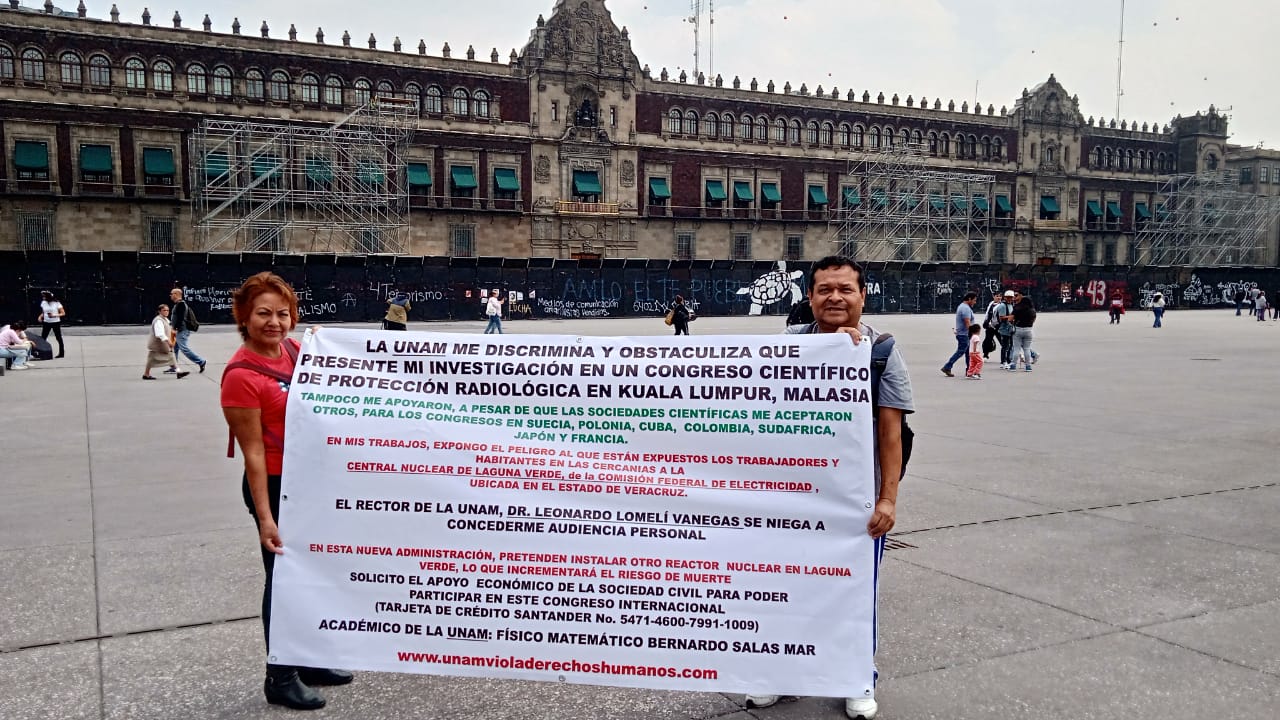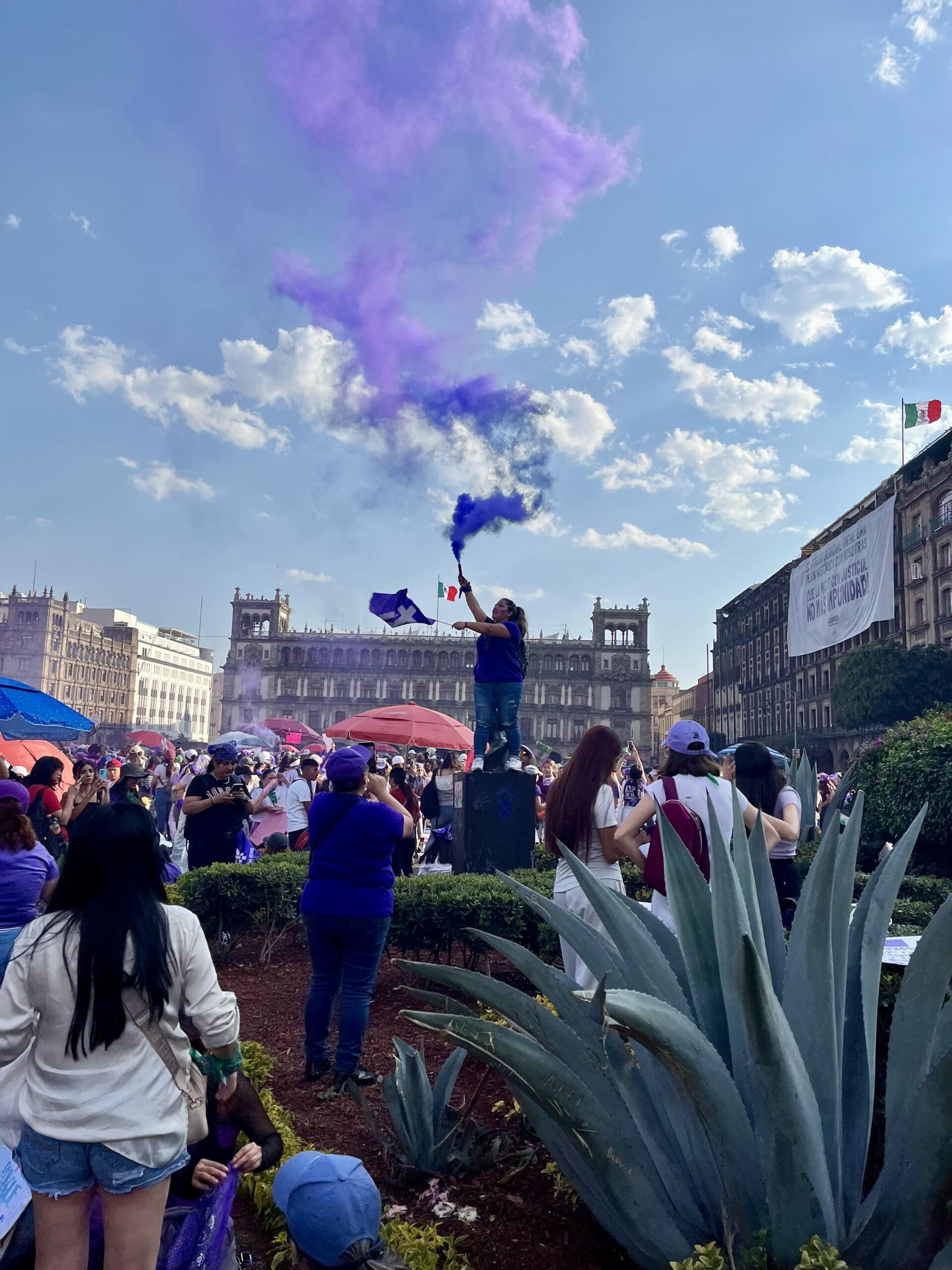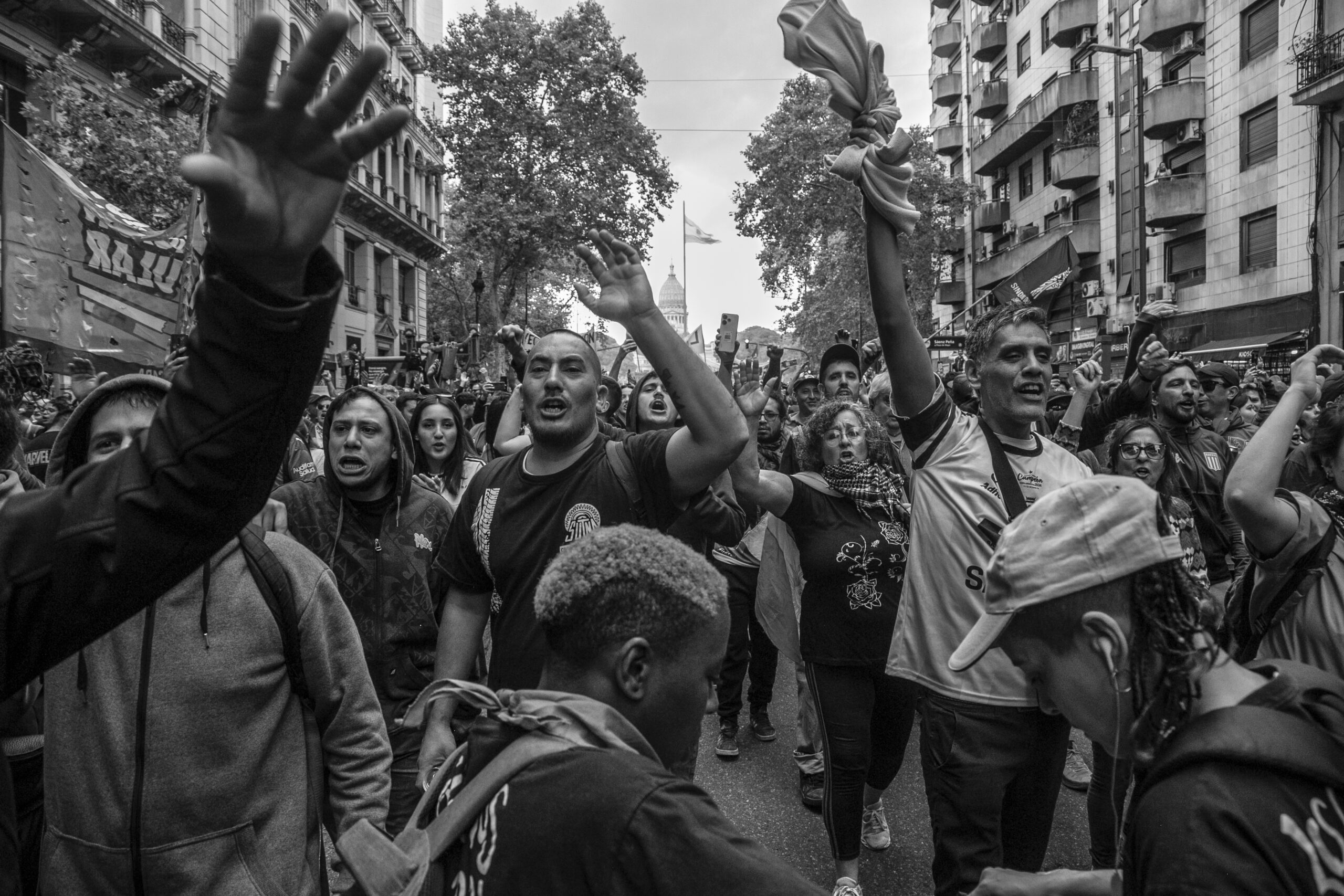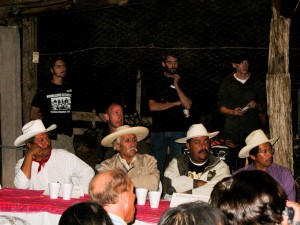 The COP 21 in Paris marks the emergence of a global deal on climate emissions and adaptation governance until 2020. Or does it? Many advocates and members of the scientific community find that the measures taken there will not serve to remedy global warming in the short run. Bill McKibbon of 350.org stated that the deal might have been adequate for 1995, but falls short of what is needed now. In Paris, the improved global goal of holding warming to a 1.5 C rise is predicated on non-binding language for global climate change mitigation and adaptation finance ($180 billion USD per year) in exchange for pledges by all national governments to limit their carbon emissions.
The COP 21 in Paris marks the emergence of a global deal on climate emissions and adaptation governance until 2020. Or does it? Many advocates and members of the scientific community find that the measures taken there will not serve to remedy global warming in the short run. Bill McKibbon of 350.org stated that the deal might have been adequate for 1995, but falls short of what is needed now. In Paris, the improved global goal of holding warming to a 1.5 C rise is predicated on non-binding language for global climate change mitigation and adaptation finance ($180 billion USD per year) in exchange for pledges by all national governments to limit their carbon emissions.
Indigenous peoples had a larger significance in Paris then they’ve had in the past, with a strong presence that included the active participation of the Inuit Circumpolar Council. The indigenous river flotilla down the River Seine beautifully demonstrated indigenous peoples leading the human rights agenda, which also advocated for women in the operative as well as the preamble sections of the agreement.
This time their actions carried the all-too-familiar-debate for indigenous inclusion outside the numerous NGO circles and into the circles of policymakers from the 193 countries represented in the United Nations. Reports indicate that the stronger position for indigenous inclusion pushed by the newly minted Liberal Party Prime Minister of Canada, Justin Trudeau, was held at bay by the United States and the European Union, who threatened to cut inclusive human rights language altogether in a pushback against developing countries’ anti-colonialist language for historic carbon emitter states’ to take responsibility for losses and damages from adverse impacts due to global warming. The stand-off was finally negotiated to include reference to indigenous peoples in the preamble, but as the Indigenous Environment Network’s legal counsel Alberto Saldamando commented , “The new draft … omits mention of human rights, including the rights of indigenous peoples, from any operative article.”
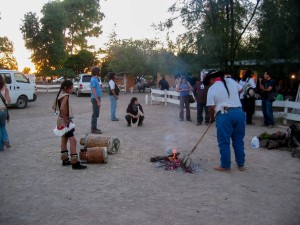 Indigenous peoples suffer disproportionately from the “losses and damages” of climate change. Arctic sea ice is melting, causing shifts in climate leading to losses of hunting and fishing areas for the Inuit in Alaska and Canada. Long-term drought now reduces water flow in arid lands of the Sonoran Desert in Sonora, Mexico and Arizona, across the border in the United States. In Sonora, the state government constructed massive dams and canals to deliver water to the non-indigenous provincial capital of Hermosillo by taking water from two main tributaries in the state. They now deprive Yoeme (Yaqui) and Makurawe (Guarajillo) of vital water flow that regulates fauna in the Western Sierra Madre foothills and the edge of the inner-coastal plain in Yaqui Territory. Indigenous peoples such as these have struggled to be heard at global climate conferences for more than a decade, and more importantly, in the regional conferences that prepare for the negotiations. No states are financing that process.
Indigenous peoples suffer disproportionately from the “losses and damages” of climate change. Arctic sea ice is melting, causing shifts in climate leading to losses of hunting and fishing areas for the Inuit in Alaska and Canada. Long-term drought now reduces water flow in arid lands of the Sonoran Desert in Sonora, Mexico and Arizona, across the border in the United States. In Sonora, the state government constructed massive dams and canals to deliver water to the non-indigenous provincial capital of Hermosillo by taking water from two main tributaries in the state. They now deprive Yoeme (Yaqui) and Makurawe (Guarajillo) of vital water flow that regulates fauna in the Western Sierra Madre foothills and the edge of the inner-coastal plain in Yaqui Territory. Indigenous peoples such as these have struggled to be heard at global climate conferences for more than a decade, and more importantly, in the regional conferences that prepare for the negotiations. No states are financing that process.
As two of the last three states to sign the 2007 UN Declaration of the Rights of Indigenous Peoples, the United States and Australia continue to trade off the price of carbon for the lives of indigenous peoples. Canada was the third state that originally did not sign the Declaration. At Paris, Canada broke from the longstanding legal objections of Anglo–law states that seek to limit land claims by indigenous, and therefore object to international conventions such as the 2007 Indigenous Rights Declaration. At the global level, this disdain of neoliberal states for indigenous lives reveals something about the origins of states in the Anglo-American Empire. They were not built just on indigenous blood, but also appropriated intricate indigenous knowledge of environments and their species. Just as indigenous peoples taught colonists how to survive in diverse regions without over-harvesting local animals and plants for food and medicine, their current observations of climate in the lands they live on, whether Inuit in the Arctic Circle, or Makurawe, Yoeme, and O’odham in the Sonoran Desert of Mexico can provide us with critical knowledge of environments undergoing current climate change impacts and species for surviving today.
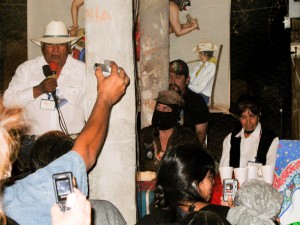 The empty propaganda of Exxon and Keystone now resound like a beaver’s tail thumping on a hollow log, proving it unfit to build a house underwater.
The empty propaganda of Exxon and Keystone now resound like a beaver’s tail thumping on a hollow log, proving it unfit to build a house underwater.
This kind of knowledge spoke to a young Prime Minister as a former history teacher comes directly from knowledge of our elders. In October of 2007, Cree of Canada and members of the Mohawk Nation joined 500 indigenous in the arid Sonoran Desert at the National Indigenous Congress hosted by the Tohono O’odham, a tribe whose lands are physically bisected by the US-Mexico Border. At the International Gathering of Indigenous Peoples of the Americas at Rancho Peñasco in Sonora, Mexico, tribes discussed oil extraction from the Athabascan Sands and drought in the Sonoran desert. No major media published what indigenous delegates talked about then, but we were already preparing for “Paris” and beyond. The Mohawks’ Wampon belts beaded together our past with the present dilemma of sharing our mother earth with others who are only now learning she cannot be taken for granted.
Just as the historic Wapom belts made of clam shells and used to narrate the “history, traditions and laws” of the Haudenosaunee Confederacy, the Tohono O’odham have long witnessed both climate refugees and immigrant deaths at the border. The Tohono O’odham survived the Huhukam, a pre-contact race that collapsed during a mega-drought in what is now Arizona, largely because of their own regional iterative migration and a keen understanding of how to access seasonal rains. The Aymara of Bolivia can also gauge planting strategies according to the brightness or dimness of the Constellation Pleiades in El Niño years.
Sub-Comandante Marcos of the EZLN, commenting about the impact of Hurricane John on Sonora, stated,
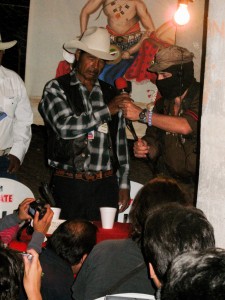 Natural disasters began to occur out of time and out of place. And after many years Sonora was hit by a cyclone or a hurricane that destroyed the homes and property of many poor people. . . As if nature were warning what will come next if we do nothing. The mission we have as Indian peoples is simple: to save the world…
Natural disasters began to occur out of time and out of place. And after many years Sonora was hit by a cyclone or a hurricane that destroyed the homes and property of many poor people. . . As if nature were warning what will come next if we do nothing. The mission we have as Indian peoples is simple: to save the world…
The rising voices of the 390 million indigenous peoples globally will increasingly be called on as the neo-colonial and geo-political architecture literally crumbles, as their tourist hunting lodges burn in African forests, and great human migrations follow the Monarch and Blue Heron. This neo-carbon future will test all our peoples. Our ceremonies teach us not to fear, but rather to listen, just as a First Parliament of Indigenous Peoples in Northeast India did on December 15th according to the Imphal Times, to sort out issues related to the “dams, and water and the fundamental rights of the people of the state.”
We shall follow the water, as Brother Moon instructs us, and remind the world every so often that it is not who you are that matters, but what you know. Our best scientists, it turns out, are Post Paris indigenous.
Author Blake Gentry (Cherokee), former Director of Education at the United Nations Association of Southern Arizona, is a public policy and development adviser to the nation of O’odham in Sonora, Mexico, and a consultant on climate adaptation for rural and indigenous peoples.
Photos by Pierre Landau

